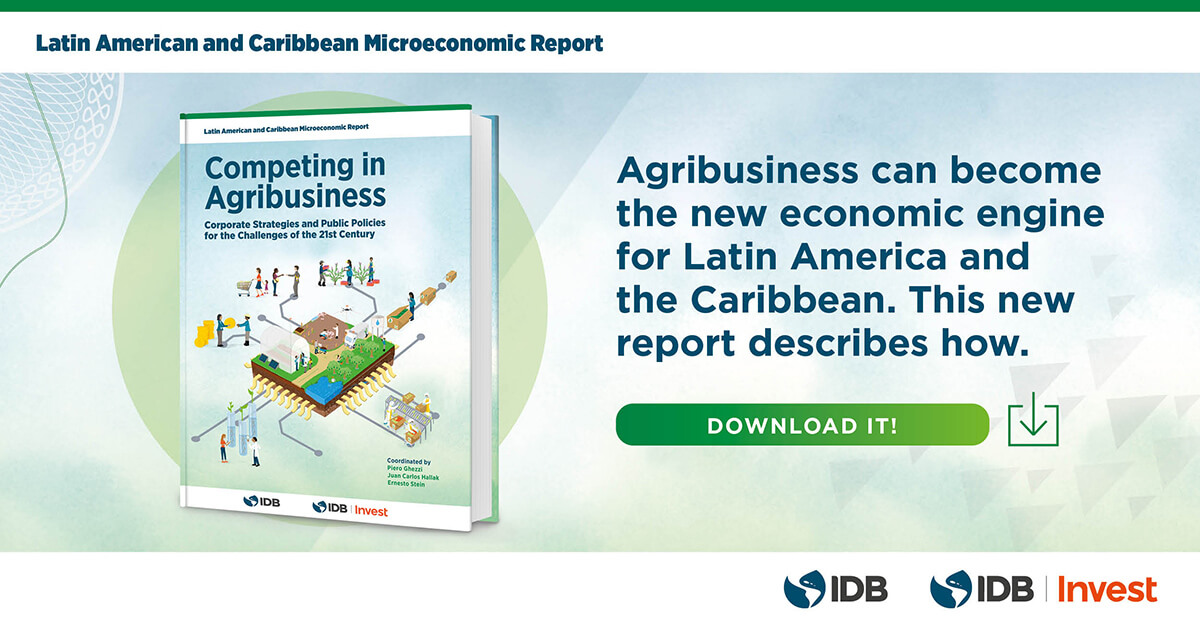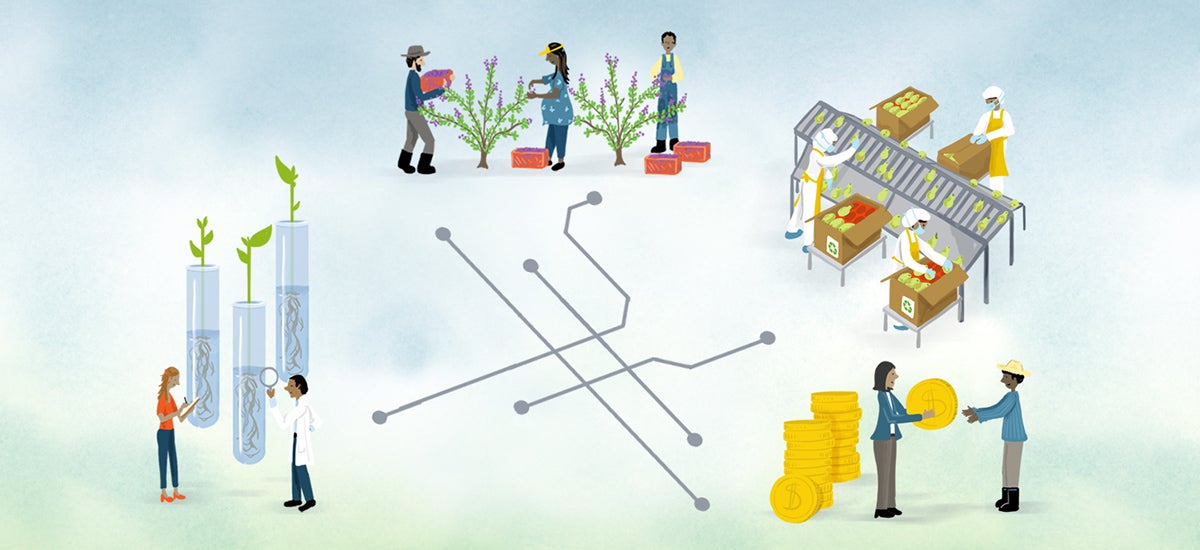
The path from agriculture to manufacturing and other high-productivity sectors was long considered the true way to structural transformation and development. By contrast, agriculture was viewed as a technologically backwards sector, with minimal innovation and little capacity to grow national income. That view, however, no longer holds. While there is still plenty of subsistence agriculture in Latin America, modern agriculture in the region uses advanced production methods, including drones, satellite imagery, precision agriculture and cutting-edge genetics. It is capable of rapidly responding to changing standards imposed by large buyers—such as food processors and supermarkets—and to the exacting requirements of consumers themselves. And it is technologically advanced, highly productive, and a potential source of national job creation and growth.
At a time when manufacturing may no longer be the natural vehicle for structural transformation in Latin America, this new reality is critical to assigning modern agriculture an important role in national development. That involves a vertical transformation for agriculture—the employment of more workers in more productive firms using more advanced production methods. And, of course, it involves the integration into global supply chains.
With Russia’s war in Ukraine, such agriculture has an additional part to play: filling gaps in supply chains caused by the war and combatting growing food insecurity at the global level.
A Report that Illustrates Paths to Success
These opportunities are the subject of a new report by the IDB entitled “Competing in Agribusiness: Corporate Strategies and Public Policies for the Challenges of the 21st Century,” which is based on more than 30 case studies of companies from the region that successfully integrated into international agrifood markets with a range of products, including everything from fruits, vegetables and meats, to infusions like coffee and yerba mate, and processed products like organic mango puree and gourmet chocolate bars.
The report emphasizes that there is no single recipe for conquering a larger share of the global market, apart from meeting the often strict standards of international purchasing firms and consumers. But it is replete with examples of how that can be done, ranging from obtaining organic and fair trade certifications, supplying coveted products unavailable in the northern hemisphere during off seasons, and producing products with better flavor, size and longer shelf life.
Integrating Small Producers into International Markets
Large cutting-edge companies are not the only ones that can participate in this dynamic, moreover. Small-scale producers, including family farms and indigenous communities, can also integrate into international markets by banding together in cooperatives or associations, and/or by associating vertically with anchor firms that provide them with technical assistance and financing, as well as facilities for packing, processing, and marketing. In this way, thousands of small producers, ranging from those that grow avocadoes in Peru to those that harvest coffee in Central America, increase value and participate in international agrifood value chains.
Modern Agriculture as a Work of Private-Public Collaboration
What the report makes abundantly clear is that this is not entirely the work of private concerns. Rather, governments and the private sector must work together to identify public goods needed for agricultural success, whether those be large-scale irrigation projects, research and development, or the negotiation of sanitary and phytosanitary protocols with importing nations. Steps taken by the Peruvian government years ago, including a new agriculture law, a free-trade agreement, and extensive irrigation projects, helped transform the Peruvian coast from a desert to a breadbasket and led to the triumph of Peruvian avocadoes, blueberries, and other fruits in international markets. The experience is but one of numerous examples in the report pointing to the fundamental importance of this private-public collaboration.

Latin America has grown far too slowly in recent decades to close its development gap with advanced countries and create enough high-quality jobs to satisfy the aspirations of its people. A vertical transformation of the agriculture sector so that it includes better public-private teamwork, greater investment in innovation, and more sophisticated and productive processes is one vital path for helping the region reach its economic potential. As this report illustrates, the future lies in an agriculture that is knowledge-intensive and capable of producing differentiated high-value products that are environmentally friendly and resistant to climate change. It lies in agriculture that can meet ever more exacting international standards while integrating both large producers and hundreds of thousands of small ones into international supply chains. The region has abundant resources and talent. The time has arrived to take advantage of those and the particularly difficult global food situation to seize the opportunity for more inclusive, accelerated, and sustainable growth.


Leave a Reply